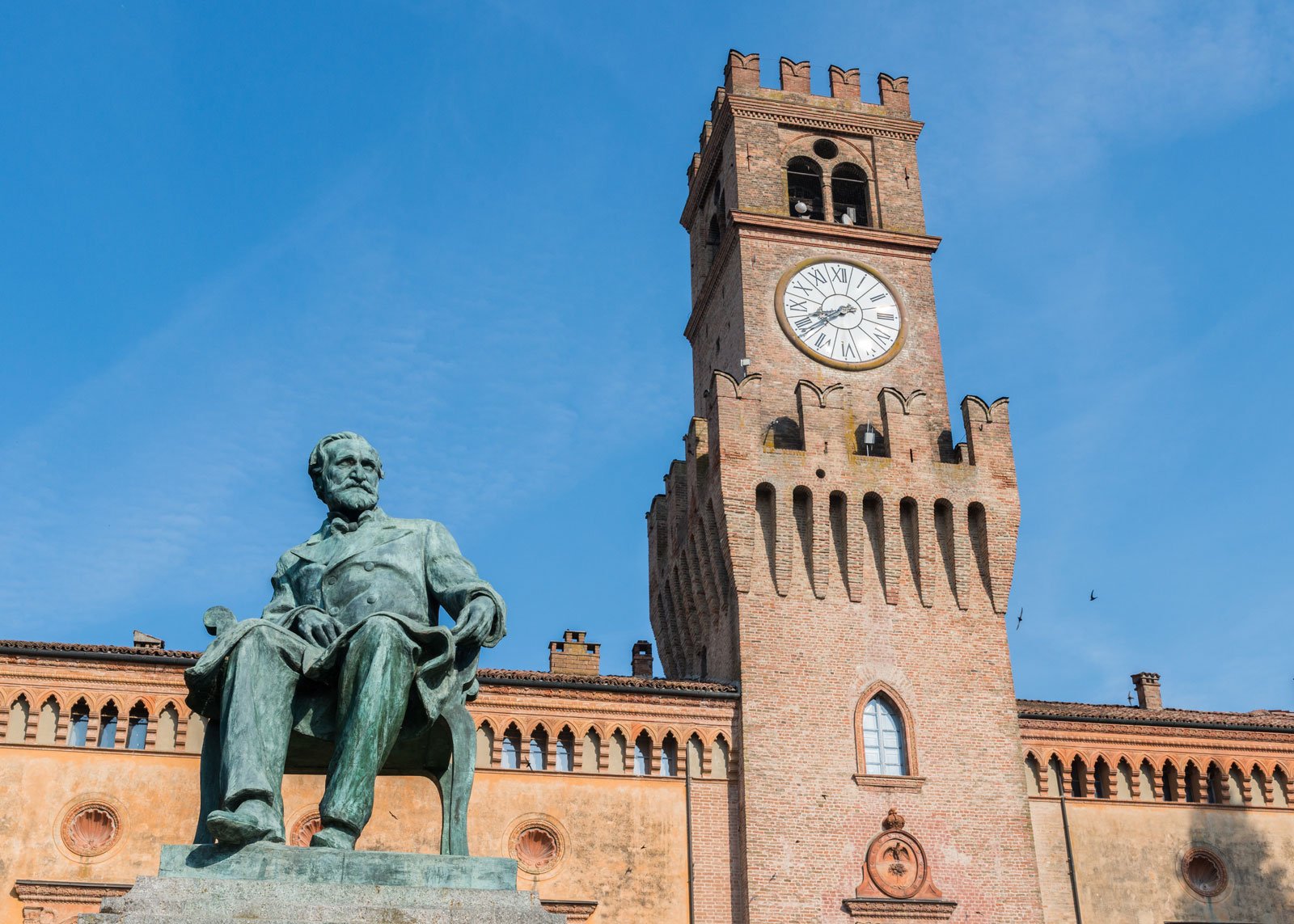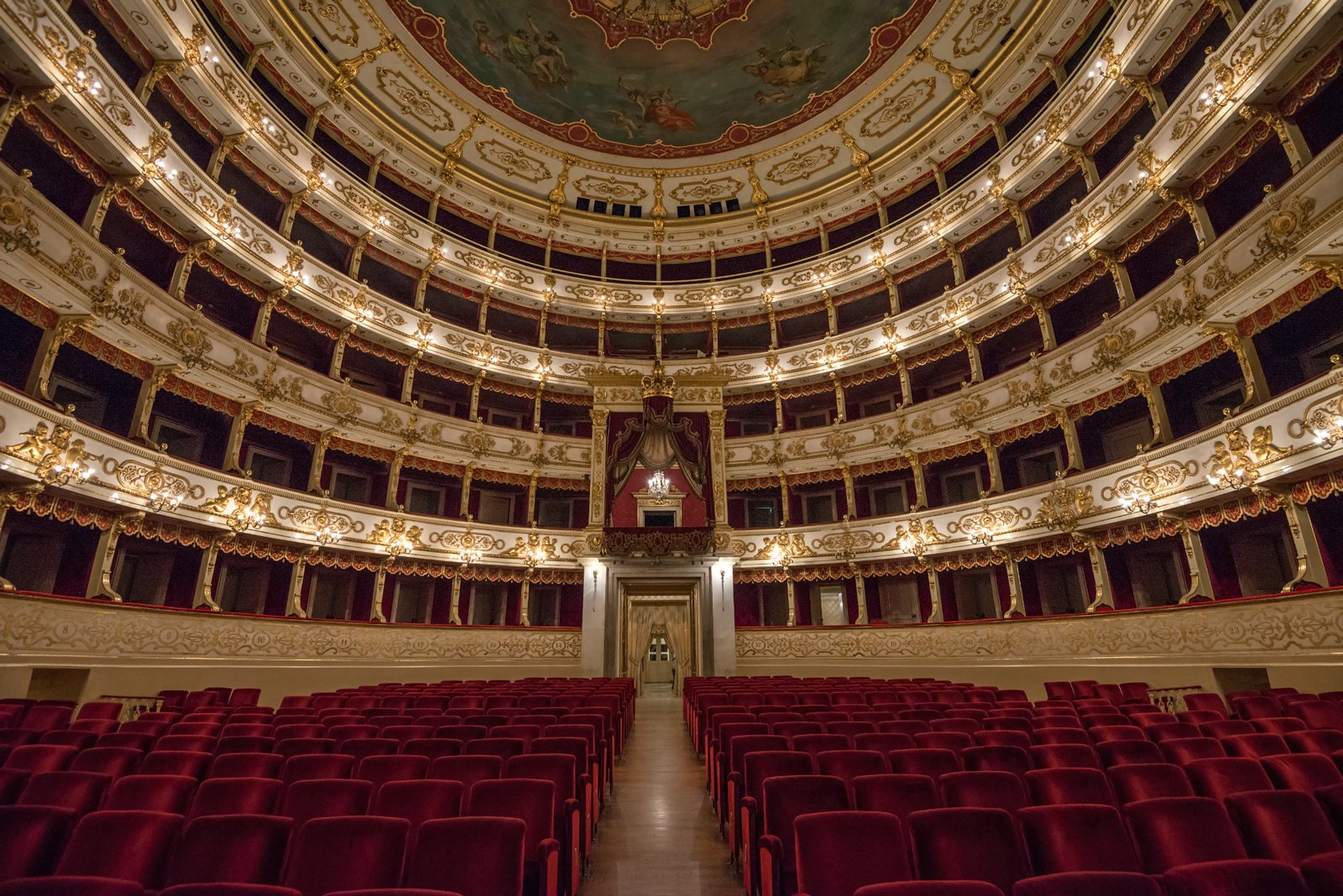It’s Verdi, Jim, but not as we know it
By Clive Paget, Limelight Magazine’s Editor-at-Large
The 2024 Verdi Festival in Parma celebrates their local hero in typical style with a fistful chosen from the Italian composer’s 26 operas, but this year there’s a definite twist.
The program
Two works on the program are considered early Verdi, composed during a period that is coming in for increasing reassessment. From a musical perspective, Attila, his ninth opera, can stake a serious claim to be ranked with the composer’s finest middle-period works. La battaglia di Legnano (The Battle of Legnano), his 13th, is often considered a mere occasional piece, yet it was one of his greatest successes.
Macbeth, while also an early work, is among the most regularly staged Verdi operas today. But who knows the French version intended to give the Parisians the balletic frisson they inevitably demanded? And Un ballo in maschera is being staged in the American colonial setting insisted on by a series of censors who considered the staged assassination of a European monarch to be distinctly on the political nose.
A popular misconception
For as long as people have been writing about Verdi, a commonly-held belief has prevailed. The composer’s early operas, we are told, are self-confessed lesser works eclipsed by the illustrious trilogy of Rigoletto, Il trovatore and La traviata that premiered between 1851 and 1853. But that’s based on a complete misnomer.
Verdi presides over the town of Busseto, one of the so-called “terre verdiane” associated with his life in the area around Parma
It was 1858 when Verdi penned his famous complaint to Countess Clara Maffei. “Since Nabucco, you may say, I have never had one hour of peace. Sixteen years in the galleys,” he wrote. It doesn’t take a mathematician to realise that he was implying his galley years spanned 1842 to 1858, a period that doesn’t just cover the three aforementioned masterpieces but includes Simon Boccanegra and the 1857 commission for Un ballo in maschera. In fact, only five of his mature operas did not fall into that period.
The point Verdi was making was not that these 19 operas were somehow artistically compromised, simply that at the age of 45 he was looking forward to taking life a little easier. Once we take an unprejudiced look at Attila, for example, we find a piece that has clearly benefited from the experience of the composer’s eight previously produced operas, including 1842’s Nabucco, a work that is invariably ranked highly and regularly staged.
The case for Attila
Premiered at Venice’s La Fenice in 1846, Attila is based on an über-Romantic drama by the German playwright Zacharias Werner (1768-1823). With its mystic mood and references to Norns, Valhalla and the Norse god Wodan, it was more likely to have appealed to Wagner in the 1840s than to an Italian composer. Indeed, one of the criticisms levelled at it over the years by Italophiles is its brooding Teutonic atmosphere.
What interested Verdi, however, were its inherently patriotic elements as his country took up arms to expel the Austrian Empire from the Italian Peninsula in the First Italian War of Independence. With Italian Unification (or Risorgimento) in the air, the Roman general Ezio’s cry of “Avrai tu l'universo, resti l'Italia a me” (“You can have the whole world but leave Italy to me”) inevitably brought the house down. Yes, the libretto has its faults, the result perhaps of changing librettists midstream, but the musical glories are legion, with rousing choruses for Goths, Ostrogoths, Visigoths and Huns, a spirited use of the offstage band, and an array of catchy arias for Atilla and his nemesis, the vengeful Odabella.
An early costume design for Attila, from Ricordi’s archive
Darling of the Risorgimento
La battaglia di Legnano has a curious history, accounting perhaps for the scarcity of modern performances. Based on the Lombard League’s attempts in 1176 to expel the German Emperor Frederick Barbarossa from Italy, of all Verdi’s political operas it’s the most obviously patriotic. In the words of its librettist Salvadore Cammarano, it’s a story that should “stir every man with an Italian soul in his breast.”
Written on commission from Rome’s Teatro Argentina, it was ideal material for a city that had recently seen off the vacillating Pope Pius IX and would soon welcome the arrival of the heroes Garibaldi and Mazzini. Keen to do his bit for the cause, Verdi headed from Paris to Rome in December 1848 to supervise the opera’s first performance. From the moment of his arrival, the musical darling of Italian republicanism was cheered in the streets by an ecstatic public who demanded access to the dress rehearsal.
On the day of the premiere, people swarmed around the opera house wearing cockades in their hats and waving flags. Cammarano was right: with its martial choruses and cries of liberty or death, the show was cheered to the rafters. The opening chorus with its exclamations of “Viva l’Italia” fired up a vociferous crowd to the extent that Verdi was forced to encore the entire fourth act – just take a moment to think about that. Ten days later, the city proclaimed the short-lived Roman Republic.
Far from being a one off, Battaglia was repurposed several times to tap into different political currents in different parts of Italy and beyond. And it’s not all tub-thumping either, abounding in affecting arias, heartfelt emotions, and with one of the composer’s most sensitively orchestrated scores to date.
Shakespeare revisited
Premiered in Florence in 1847, Macbeth was Verdi's tenth opera, following hot on the heels of Attila. His first opera on a Shakespeare play, it proved a considerable success and was soon playing all over Italy. In 1850 it reached New York and in 1860 it was well received in London. So, what possessed him 18 years later to revise and expand the work as a French Grand Opera?
In fact, Verdi had been approached about a French version as early as 1852 but somehow other priorities always seemed to take precedence. By 1864, however, Verdi was in more of a position to pick and choose. What’s more, he had already produced lucrative French versions of I lombardi alla prima crociata (as Jérusalem) and Il trovatore (the never-seen-these-days Le trouvère, complete with gypsy ballet). Although he was only asked to insert the obligatory Act III divertissement and come up with a final rousing chorus to send the Parisians home on a high, in the event he went a great deal further.
The fact is, two decades on Verdi was a more experienced musical dramatist. Exacting as ever with his frequently brow-beaten librettists, he instructed Francesco Maria Piave to subject the opera to a thorough overhaul. Major modifications included the insertion of a whole new scene in Act II and a showcase aria for Lady Macbeth. Much of Act III was entirely rewritten, with a new aria for Macbeth and the above-mentioned ballet. The Act IV opening chorus was recomposed and out went Macbeth’s final aria in favour of his dying off-stage followed by the requested celebratory chorus.
Curiously, the Paris premiere on 21 April 1865 was not as well received as Verdi had hoped. “Macbeth was a fiasco,” he wrote. “It seemed to me that I had not done too badly; but it seems I was wrong.” His wife Giuseppina Strepponi, however, wrote at the time that she believed the new Macbeth would only be appreciated in 50 years’ time, and she was right. Though the French version fell into obscurity, nearly all of Verdi’s revisions have been translated back into Italian to form part of the opera as we generally hear it today.
Drama in Un ballo in maschera’s final scene, from an early copy of the vocal score
Verdi vs the censors
As for Un ballo in maschera, Verdi’s problems started the moment he went head to head with his bête noir, the Italian censors. The assassination of King Gustav III of Sweden at a masked ball in 1792 had already been turned into a French opera by Auber in 1833 and later an Italian opera by Mercadante, which might have led Verdi to believe he’d have no problems writing a work on the same subject. He couldn’t have been more wrong.
Commissioned for Naples in 1857, the first run-in occurred when the local censor refused to allow the depiction of a monarch – and especially their assassination – on the stage in any shape or form. Since a similar problem had arisen with Rigoletto, Verdi could probably see the writing on the wall. Revising what would have been Gustavo III as Una vendetta in domino, the King of Sweden became an ancient Duke of Pomerania (a conveniently extinct dynasty), with the action moved to Stettin.
When the Naples censor demanded further changes, the composer spat the dummy, sued the opera house and took his score to Rome instead. There, after the Roman censors insisted on further revisions, Verdi relocated the action again. Un ballo in maschera, as it was now called, was set in Boston during the period of British colonial rule with the leading character becoming a fictitious Duke of Surrey – despite there being no such dukedom. In the event, even that was objected to, so the leading character was downgraded to the equally fabricated Richard, Count of Warwick (Warwick being a British earldom, by the way).
Despite its chequered genesis, Un ballo in maschera proved an instant hit. These days it is more common to see it restored to its Swedish setting as originally intended, but Verdi never forgot the wretched time he experienced labouring over such a seemingly harmless subject.
So there’s much to be gained from pushing beyond the misconceptions about Verdi’s work, from a nuanced understanding of their historical context to an appreciation of the choices made when designing modern productions.
Hear these four works by Verdi, in addition to Cesti’s L’Orontea at Milan’s La Scala, on Limelight Arts Travel’s upcoming tour, Milan & the Festival Verdi in Parma, led by Clive Paget this October.
The interior of Parma’s jewel-like Teatro Regio, one of the settings of the Festival Verdi (image: Nicola Mazzocato, CC BY SA 2.0)




